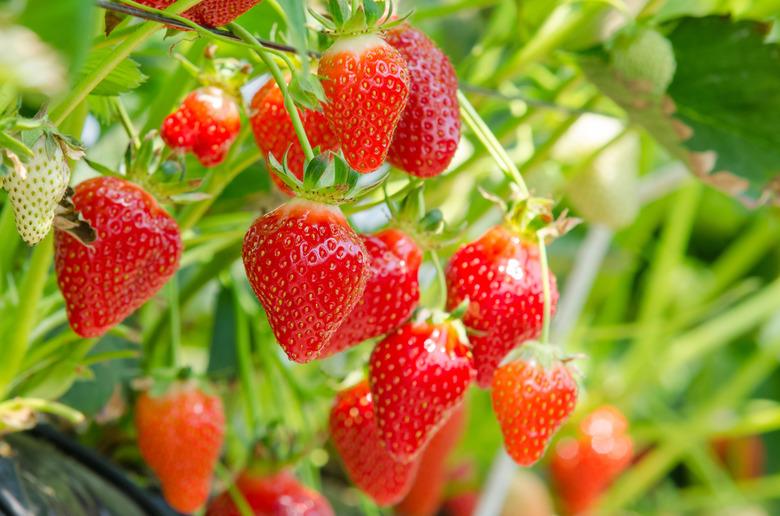How To Plant Strawberries In Arizona
Can you imagine strawberry patches in Arizona, where mighty saguaro cactus grow in vast, sandy deserts? It may seem unlikely or even impossible, but it happens every summer. Juicy, ripe strawberries (Fragaria x ananassa, USDA zones 5-9) from the backyard garden are one of the true pleasures life offers, and Arizona gardeners don't let the state's extreme temperatures and soils stop them. But remember that growing strawberries in Arizona isn't the same as growing strawberries in Louisiana or California. You have to work with what you have in order to get homegrown bright red berries in your breakfast cereal.
Basics of Growing Strawberries
Strawberry lovers are fortunate that these sweet treats can grow almost anywhere in the nation, cold climates and hot, even though they're grown as annuals in some zones. Their growing range excludes only the very hottest zones, found in Puerto Rico, and the coolest, mostly in the northern part of Alaska. That means that growing strawberries in Arizona — where the hardiness zones of the biggest cities are 9a and 9b — is definitely doable.
Strawberry plants need certain basic conditions to produce fruit. They need room to sprawl in well-drained soil, preferably sandy loam. The soil should be slightly acidic with a pH of 5.8 to 6.2. To avoid certain diseases, plant berries in areas where you haven't grown other plants in the same plant family (Rosaceae) in recent years.
You can choose between three different types of strawberries:
- Day-neutrals that produce fruits continuously in temperatures between 35 and 85 degrees.
- Everbearers that (despite their name) flower and fruit only in the fall.
- Junebearers that are sensitive to day length, budding in autumn but flowering and fruiting in spring.
Zone 9 Strawberries
Phoenix isn't just the largest city in Arizona, it's in one of the hottest hardiness zones in the state, USDA zone 9b. Tucson is only slightly cooler, in USDA zone 9a. Temperatures in both big cities hit and exceed 100 degrees regularly in the summer. Growing zone 9 strawberries means taking care to locate them where the plants get afternoon shade but plenty of cooler morning sun.
You'll have to test and adjust the soil to make sure it's slightly acidic. If your soil, like much of the soil in Arizona, is alkaline, add elemental sulfur at the recommended rate indicated by a soil test when preparing the beds to help balance the alkalinity. You also need to ensure good drainage by working in garden compost and removing any caliche, a type of hardened calcium carbonate deposit. It resembles rock and interferes with drainage. You might consider using raised beds or growing berries in containers if your soil is too hard to amend.
You may see different types of strawberries on sale in Phoenix or Tucson, but there's no contest — go with Junebearers. These strawberries flower and fruit early in spring. They're problematic where a spring frost might strike after planting, but that's less likely in toasty areas of Arizona. And, Junebearers are perfect for lower, warmer elevations with fewer late frosts.
Watering Arizona Strawberries
It will surprise nobody that regular water is essential to a strawberry crop. This is true in foggy San Francisco but even more important in hot, dry climates like those in zone 9 in Arizona. You'll need to water early and often to help your strawberries thrive.
At the time of planting, water thoroughly. Soak the ground in the strawberry bed to a depth of 6 inches, and don't put away that hose. You need to keep the irrigation coming every day the first week and perhaps every day during spring. Keep in mind that all of the roots of strawberry plants remain in the top 6 inches of the soil and must be kept constantly moist. If possible, invest in a drip-irrigation system, and program it to provide sufficient water to keep the ground moist, at least 1 to 2 inches a week during hot weather. Overhead watering in hot weather wastes water and promotes diseases like rot.
